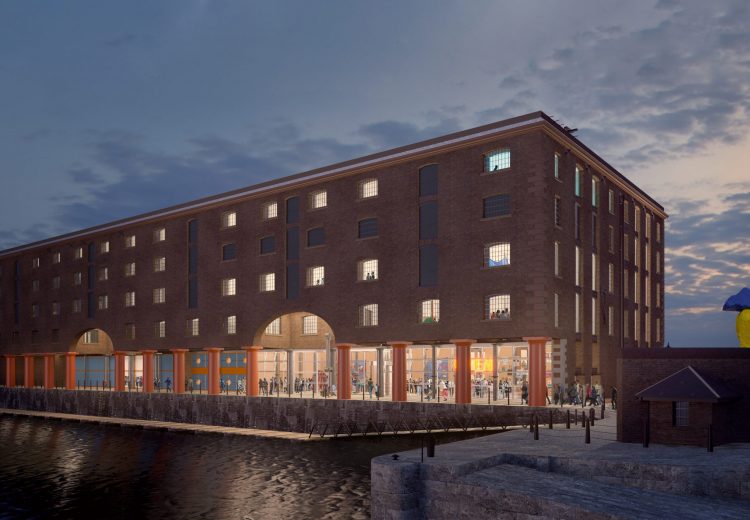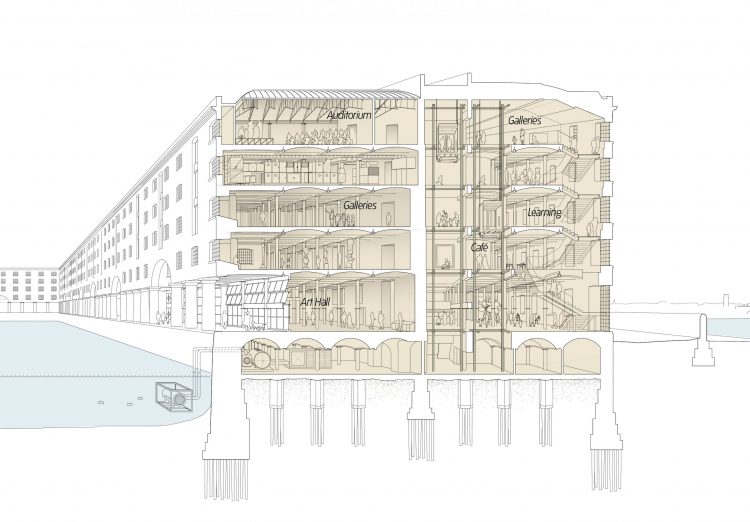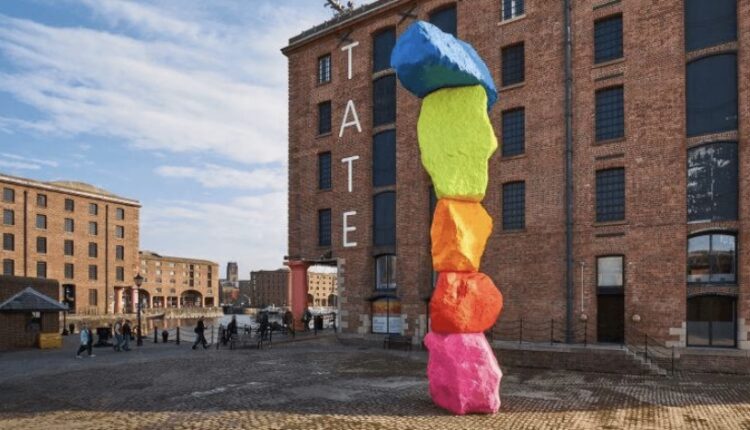Designs revealed for £29.7m Tate Liverpool transformation
Preliminary designs for the £29.7m transformation of the Tate Liverpool gallery in Royal Albert Dock are revealed. Tony McDonough reports

Tate Liverpool has revealed first stage designs for the £29.7m transformation of the landmark gallery.
Established in 1988, Tate Liverpool was one of the anchor tenants of the reborn Royal Albert Dock on the waterfront. It remains one of its most popular attractions and the gallery is set to undergo the biggest revamp in its history.
Funding for the project is coming from the Government, including £10m from the Levelling Up Fund. This was part of a successful combined £20m bid with National Museums Liverpool and £6.6m from DCMS estates maintenance fund.
Liverpool City Region Combined Authority awarded funding for the developmental phase of the scheme via its Strategic Investment Fund.
First stage designs for the work by 6a architects have now been unveiled. They show a new public ‘Art Hall’ and events space on the ground floor, opened up to admit sunlight and views across the historic dock.
New gallery spaces over three floors will showcase the diversity of Tate’s collection and are interspersed with public riverside foyers. Opening up of the gallery’s façade will increase its visibility on the waterfront and within the Royal Albert Dock.
It plans to reveal new panoramic views of the River Mersey. A new exhibition space at ground floor level will be created to exhibit work that can be seen from the dockside, increasing the visibility of the gallery’s work to visitors.
Larger contemporary works which were previously impossible to display at Tate Liverpool, will be accommodated by new double-height galleries.
Environmental standards and thermal performance will be significantly improved with new services replacing fossil fuel with renewables. Natural ventilation will be introduced to the building to ensure better energy performance.
6a architects will sensitively reveal more of the former Victorian warehouse through features such as the new open plan ground floor and uncovering windows.
Key themes from the Stirling Wilford scheme, which formed the gallery in the 1980s, will be retained, including a reimagining of the façade and the twin cylindrical gallery doors.
Helen Legg, director of Tate Liverpool, said: “We are proud to be the UK’s most visited modern art gallery outside London. But, after 35 years, we want to do more to engage new audiences and to reduce the gallery’s impact on the environment.


“Through this once-in-a-generation renewal of Tate Liverpool we will become an art museum fit for the 21st century, serving the needs of artists and audiences, now and into the future.”
Parts of the Liverpool Biennial will be one of the last exhibitions to run at Tate Liverpool ahead of its closure, with the festival taking over one of its spaces from June 10 to September 17, 2023.
The gallery will also be extending its current JMW Turner and Lamin Fofana exhibition until September 24, 2023. Free exhibitions at the gallery will remain on show until October 15, 2023, when the gallery will close for two years to allow the work to take place.
READ MORE: Royal Albert Dock changes hands for £40m
READ MORE: Liverpool ONE and dot-art establish ‘affordable’ arts hub
While the GradeI-listed 180-year-old building is closed for refurbishment Tate Liverpool will continue to host events and one-off projects in collaboration with other spaces in the city. Plans for the programme for 2024 will be announced in the coming weeks.
Stephanie Macdonald, founding director at 6a architects, added: “Tate Liverpool is a landmark project of re-use and so much of what we need now to re-imagine the gallery is already there.
“By uncovering and opening up, we can re-engage the robust materiality and unique waterfront location of Jesse Hartley’s 19th century warehouse.”

